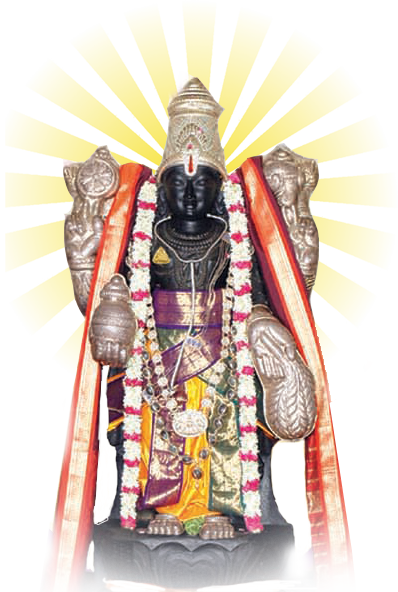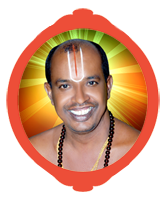
On 09.10.2020. Theipirai Astam,i Friday Chandi Homam at Danvantri Arogya Peedam by 7.00 am to 3.00 pm.
Chandi Homam is a prominent homa and one of the most powerful one for getting overall Success in all undertakings and for removal of all kinds of doshas and obstacles in one’s life. Maa Durga in the form of Devi Chandi is the prime Deity of this homam and her blessings are bound to clear all your obstacles and hurdles in your path to success and glory. Performance of a Maha Chandi Homam | Chandi Path sets a person free from all kind of Black Magic, Evil Eyes, Obstacles, Negative Energies, Evil deeds against him and the person is blessed with a long lasting Health, Wealth and Prosperity.
Chandi Homam also supports a person in achieving victory over enemies and in court cases. In this Chandi Yagam, an extensive Puja and Homam are carried out for Devi Durga. In this Homam, Goddess Durga is worshipped as a girl child below 10 years of age (Kanya) and hence girls from the same age group are worshipped during this puja and homam. All the other incarnations of Devi Durga are also worshipped during the Chandi Path or Chandika Homa.
The Chandi homam or Chandika Homa is a very unique sacrificial rite involving powerful Chandi Path or Durga Saptasati mantras. There are 700 mantras, spread across 13 chapters of the Markandeya Purana. It is said that reciting the Chandi path will drive away all the negative energies in the reader’s life. These chapters are divided into three parts. The 1st chapter is devoted to Goddess Durga, 2nd, 3rd, and 4th chapters extol the greatness of Goddess Mahalakshmi. The remaining chapters are devoted to Saraswathi, the Goddess of Learning.
As per ancient Vedic texts, Chandi Homam is an ultimate prayer to Maa Durga (also known as Maa Chandi) which can be extraordinarily beneficial to us for removing all kinds of Obstacles and help us achieve our goals in life by clearing all our problems in life. The importance that Rudrabhishekam holds for Lord Shiva, Chandi Homam holds the same for Devi Durga.
Benefits of Performing Chandi Homam:
By performing the Chandi homa, the sufferings that are caused by hostile elements, are eradicated. The sufferings resulting from poison, sorcery, thieves etc., are removed by performing this homam.
Chandi homam is performed to attain better health, prosperity, longevity, food, wealth, progeny, fame, success, strength etc,
Helps in removal of fear, ailments, danger, defeat in the hand of adversaries etc.
By performing the homa five times, evil planetary influences are removed.
The performance of this homa seven times removes all fears,
performance eleven times begets royal influence
sixteen times begets progeny.
Chandi Homam helps in overcoming obstacles and barriers in life.
Helps you attain success and win over one’s enemies.
Blesses one’s life with positivity and happiness.
Liberates one from evil eyes and curses.
Chandika Homam
Maa Durga – Epitome of Power
Chandi Homam Cost and Procedure:
Chandi Homam being an extraordinary Homam or pooja, it has to be performed by expert priests with years of experience in handling such a complex and powerful homa. If not done properly, the results might not be fruitful.
who can perform the Chandi Homam by chanting the Slokas containing in the 13 chapters of Durga Saptashati, followed by performance of the actual Homa with other rituals which includes:
Ganapathy pooja: Worshipping Lord Ganesha clears all the obstacles and paves way for one’s success. So, before any auspicious beginning, Lord Ganesha is first invoked with pooja and prayers.
Kanya pooja: Kanya pooja is a ritual of worshiping girls (aged 6 – 10), symbolizing the Kanya Kumari form of Goddess Chandi or Durga. This ritual is specially performed to recognize the divine feminine power vested in a girl child.
Anugna Sankalpam: Seeking the consent of the Goddess to perform the Yagam which is a sacred ritual. The ritual specifies for whom, where and when the yagna is performed.
Punyahavachanam: Purifying the mind, body and place before the Chandi yagam is performed. Holy water is sprinkled with mango leaves around the place with the chanting of Mantras.
Kalasa Sthaapana: Kalasa means a pot. It is made of metal and is filled with water and placed with Mango leaves immersed in the water. Pooja is performed to this Kalasa invoking the blessings of the goddess Chandi.
Saptashati Parayanam: Chanting of Durga Saptashati Slokas (700 sanskrit shlokas) while worshipping the various forms of the Goddess. Bhairava Bhali (offering): After the chanting of Slokas, offering is made to Lord Bhairava (an incarnation of Lord Shiva) to signify the ritual.
Punyahavachanam: Pooja and mantras are chanted to purify the place and people who are performing the Homam
Gho pooja: The Sanskrit word Gho means Cow. In Hinduism, Cow is considered to be ‘Khamadhenu’, a holy animal embodied with divine qualities. Pooja and prayers are offered to the cow before the homam, seeking her blessings for prosperity.
Suhasini Pooja: Offering pooja to an elderly married woman (whose husband is alive) and performing Pada pooja to that person (traditional foot washing ceremony) to invoke her blessings.
Dampathi pooja: Dampathi means couple. Prayers are offered to an elderly couple with Padha pooja.
Brahmachari pooja: A Brahmachari is an unmarried man. He is held in high esteem in Vedas and Puranas for several reasons. Padha pooja and prayers are offered to a Brahmachari seeking his blessings.
Chandi yagna: The fire ritual is performed with the chanting of Mantras and Slokas.
Sumangala Dravyaahuti: Auspicious materials such as Saree, turmeric, sandalwood powder, kumkum (vermillion) etc. are offered to the Goddess invoked in the Fire.
Purnaahuti: Chandi Yagam becomes complete only when this ritual is performed. Betel leaves, Betel nuts, Coconut, Kumkum (red colored auspicious powder), Turmeric, Flowers, Fruits, a coin, a small bag of herbs are put together in a silk cloth and tied. The bag is dropped into the fire seeking the blessings of the Almighty.
Maha Deeparadhana: A ritual to honor Goddess Chandi. Lights are lit using camphor and are used to glorify the Goddess. It is also called Aarthi and is performed during the end of Chandika homa.
More Details. Sri Danvantri Arogya Peedam, kilpudhupet, Walajapet,632 513.
www.danvantritemple.org.9443330203.





